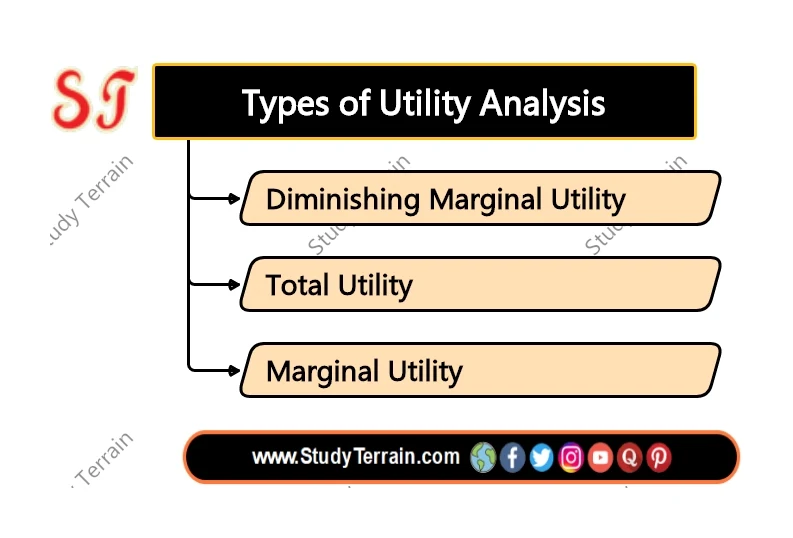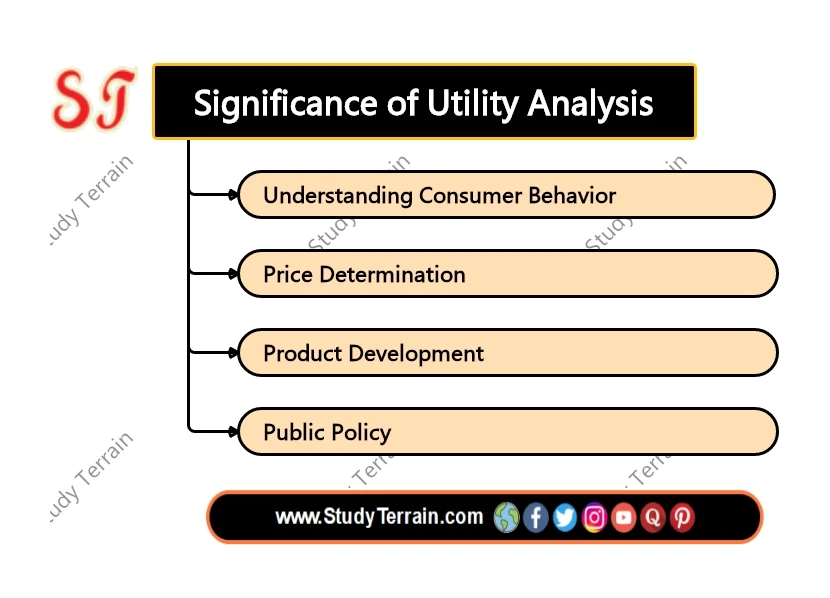In the field of economics, understanding human preferences and decision-making lies at the heart of utility analysis. Utility, in economic terms, refers to the satisfaction or happiness that individuals derive from consuming goods and services. In this article, we'll delve into utility analysis, its significance, and how it provides insights into consumer behavior and decision-making.
Table of content (toc)
What is Utility?
Utility is a concept used to measure the level of satisfaction or happiness that individuals derive from consuming goods and services. It's important to note that utility is subjective and varies from person to person and from situation to situation. What provides utility to one person may not necessarily provide the same level of utility to another.
Types of Utility Analysis
Utility analysis involves the study of how individuals make choices to maximize their utility. It's based on several key principles:
 |
| Types of Utility Analysis - Study Terrain |
Diminishing Marginal Utility
This principle states that as individuals consume more of a good or service, the additional satisfaction they derive from each additional unit decreases. For example, the first slice of pizza might bring a lot of satisfaction, but the tenth slice might not be as enjoyable.
Total Utility
Total utility refers to the overall satisfaction derived from consuming all units of a particular good or service.
Marginal Utility
Marginal utility is the additional satisfaction obtained from consuming one more unit of a good or service. It's calculated as the change in total utility divided by the change in quantity consumed.
Significance of Utility Analysis
Utility analysis is significant for several reasons:
 |
| Significance of Utility Analysis - Study Terrain |
Understanding Consumer Behavior
By analyzing utility, economists gain insights into how consumers make choices. Consumers seek to maximize their total utility within their budget constraints, choosing combinations of goods and services that provide the most satisfaction.
Price Determination
Utility analysis helps in determining prices. Goods and services that provide higher levels of utility tend to command higher prices in the market.
Product Development
Companies use utility analysis to design products and services that better meet consumer preferences. Understanding what brings satisfaction to consumers helps in creating products that are in demand.
Public Policy
Utility analysis informs public policy decisions related to taxation, subsidies, and welfare programs. Policymakers aim to maximize social welfare by allocating resources to areas where they provide the most utility to society.
Real-World Application of Utility Analysis
Let's consider a real-world example to illustrate utility analysis:
Suppose you're at a grocery store and have $10 to spend on apples and oranges. The marginal utility of each fruit is as follows:
Oranges: The first orange brings you 18 units of utility, the second brings 12 units, and the third brings 8 units.
To maximize your utility, you'll allocate your $10 in such a way that the marginal utility per dollar spent on apples equals the marginal utility per dollar spent on oranges.
Conclusion
Utility analysis provides valuable insights into human behavior and decision-making. By understanding how individuals derive satisfaction from consuming goods and services, economists, businesses, and policymakers can make better-informed decisions. Utility analysis isn't just about maximizing satisfaction—it's about understanding human preferences and striving to improve overall well-being through more efficient allocation of resources.
For more content visit Managerial Economics



